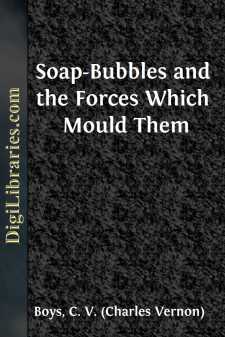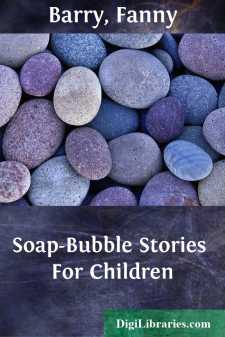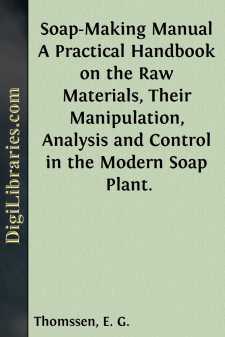Categories
- Antiques & Collectibles 13
- Architecture 36
- Art 48
- Bibles 22
- Biography & Autobiography 813
- Body, Mind & Spirit 142
- Business & Economics 28
- Children's Books 17
- Children's Fiction 14
- Computers 4
- Cooking 94
- Crafts & Hobbies 4
- Drama 346
- Education 46
- Family & Relationships 57
- Fiction 11829
- Games 19
- Gardening 17
- Health & Fitness 34
- History 1377
- House & Home 1
- Humor 147
- Juvenile Fiction 1873
- Juvenile Nonfiction 202
- Language Arts & Disciplines 88
- Law 16
- Literary Collections 686
- Literary Criticism 179
- Mathematics 13
- Medical 41
- Music 40
- Nature 179
- Non-Classifiable 1768
- Performing Arts 7
- Periodicals 1453
- Philosophy 64
- Photography 2
- Poetry 896
- Political Science 203
- Psychology 42
- Reference 154
- Religion 513
- Science 126
- Self-Help 84
- Social Science 81
- Sports & Recreation 34
- Study Aids 3
- Technology & Engineering 59
- Transportation 23
- Travel 463
- True Crime 29
Soap-Bubbles and the Forces Which Mould Them
Description:
Excerpt
PREFACE.
I would ask those readers who have grown up, and who may be disposed to find fault with this book, on the ground that in so many points it is incomplete, or that much is so elementary or well known, to remember that the lectures were meant for juveniles, and for juveniles only. These latter I would urge to do their best to repeat the experiments described. They will find that in many cases no apparatus beyond a few pieces of glass or india-rubber pipe, or other simple things easily obtained are required. If they will take this trouble they will find themselves well repaid, and if instead of being discouraged by a few failures they will persevere with the best means at their disposal, they will soon find more to interest them in experiments in which they only succeed after a little trouble than in those which go all right at once. Some are so simple that no help can be wanted, while some will probably be too difficult, even with assistance; but to encourage those who wish to see for themselves the experiments that I have described, I have given such hints at the end of the book as I thought would be most useful.
I have freely made use of the published work of many distinguished men, among whom I may mention Savart, Plateau, Clerk Maxwell, Sir William Thomson, Lord Rayleigh, Mr. Chichester Bell, and Prof. Rücker. The experiments have mostly been described by them, some have been taken from journals, and I have devised or arranged a few. I am also indebted to Prof. Rücker for the use of various pieces of apparatus which had been prepared for his lectures.
I do not suppose that there is any one in this room who has not occasionally blown a common soap-bubble, and while admiring the perfection of its form, and the marvellous brilliancy of its colours, wondered how it is that such a magnificent object can be so easily produced.
I hope that none of you are yet tired of playing with bubbles, because, as I hope we shall see during the week, there is more in a common bubble than those who have only played with them generally imagine.
The wonder and admiration so beautifully portrayed by Millais in a picture, copies of which, thanks to modern advertising enterprise, some of you may possibly have seen, will, I hope, in no way fall away in consequence of these lectures; I think you will find that it will grow as your knowledge of the subject increases. You may be interested to hear that we are not the only juveniles who have played with bubbles. Ages ago children did the same, and though no mention of this is made by any of the classical authors, we know that they did, because there is an Etruscan vase in the Louvre in Paris of the greatest antiquity, on which children are represented blowing bubbles with a pipe. There is however, no means of telling now whose soap they used.
It is possible that some of you may like to know why I have chosen soap-bubbles as my subject; if so, I am glad to tell you. Though there are many subjects which might seem to a beginner to be more wonderful, more brilliant, or more exciting, there are few which so directly bear upon the things which we see every day....






